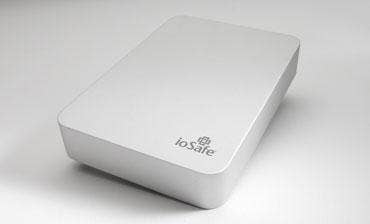Shock-Proof Hard Drives From ioSafe Live Up To Claims

Neither rain, nor fire, nor drop from height, nor deep immersion in noxious fluids, shall keep ioSafe from spinning 'round, and retrieving your customer's data. While that's not the official slogan of ioSafe, maker of disaster proof storage hardware, it would be a good start, and could include three-day submersion in salt water, crush resistance of up to 5,000 pounds and continuous pounding of blowing sand and dust, icing and exposure to UV rays.
For a starting price of $150 for a 250 GB drive and $230 for 1 TB, the company will repair or replace a failed drive -- regardless of reason -- and recover the data free of charge. That's about $1.67 per gigabyte, including the drive itself. Compare that with data recovery services that start at around $0.50 per gigabyte. In fact, IoSafe is so confident in its protection techniques that they'll pay to up to $5,000 to recover data from the drive, if professional forensic services are required following for an in-warranty drive.
For this review, ioSafe sent the CRN Test Center a 750-GB model, in which is nested a 7200 RPM SATA drive that's suspended in ioSafe's six-axis suspension system. The solid aluminum case appears impenetrable; its only openings are for USB 3.0 and Kensington Security ports and a power/activity LED. By default, each drive includes one year of ioSafe's Data Recovery Service; two- and three-year plans are available for $50 and $100. The drive receives its power only from the USB port. For machines that lack high-power USB, a special Y-cable channels power from two USB ports to the drive's USB 3.0 Micro-B connector. We still don't see many of the Micro-B connector, which looks like a wider version of the slim Micro-A connector with an off-center notch.
Performance of the ioSafe drive was outstanding. Testers connected the unit to an Asus Tech Crosshair IV Formula with an AMD 890FX chipset with an AMD Phenom II X6 1090T six-core processor. When connected to one of the motherboard's two USB 3.0 ports, the ultra rugged unit and its 7200 RPM drive delivered a peak transfer rate of 32.8 MB per second and 8410 input-outputs per second. After peak performance was measured but without removing it from the test fixture, we lifted the unit and smashed it hard against the bench, all the while watching its throughput performance. Throughput declined, of course, but went right back up to its peak level soon after the percussion session ended. When testing the unit's performance on USB 2.0, it turned in a peak throughout of 6.8 MBps and 1745 IOps, which was actually faster than an SSD drive we tested recently with exactly the same settings.
To see ioSafe in action,this short video should provide all the evidence you need to believe that these drives are almost indestructible. The Test Center sees a great many potential customers for drives of this sort, including those destined for hostile deployments of the military, the metal shop and the music industry. But beyond such environs, the average cubicle generates enough dust over time to choke a horse; just ask your service department. When data protection is of the utmost importance, the CRN Test Center recommends solutions such those from ioSafe.